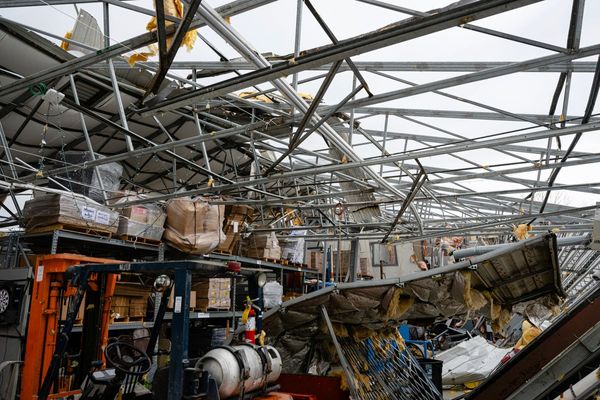A long and hard-fought electoral battle came to an end in Uttar Pradesh on Monday, with 57.17% of the electorate spread over nine districts voting in the seventh and last phase of the Assembly polls. In 2017, the region recorded a turnout of around 60%. After the first and second phases, the last phase has seen a significant drop in voting percentage.
At 61%, Chandauli recorded the highest turnout, while Azamgarh, Samajwadi Party chief Akhilesh Yadav’s Lok Sabha constituency, saw the lowest percentage, scoring 53.8%. The eight constituencies in Prime Minister Narendra Modi’s Lok Sabha constituency Varanasi scored 58.8%.
According to an Election Commission release, 290 complaints of violation of the Model Code of Conduct were received out of which 108 were found to be true and legal action was being taken.
Key candidates
Some of the key BJP candidates whose fate has been locked in the EVMs in this phase include Tourism Minister Neelkanth Tripathi from Varanasi South, Anil Rajbhar from Shivpuri, Ravindra Jaiswal from Varanasi North, and Girish Yadav from Jaunpur.
Other keenly watched candidates in this phase are Suheldev Bhartiya Samaj Party (SBSP) chief Om Prakash Rajbhar from Zahoorabad and BJP turncoat Dara Chauhan from Ghosi. The fate of strongman Dhananjay Singh, who is contesting on BJP ally Janata Dal (United’s) ticket from Malhani in Jaunpur is also sealed. Interestingly, the BJP has also fielded a strong candidate in former MP K.P. Singh from the seat. All eyes are also on the Mau Sadar seat where Mukhtar Ansari's son Abbas Ansari is contesting on the SBSP ticket.
As the focus shifts to March 10, it’s time to recall what was at stake in the month-long election process. It was a referendum on the BJP’s COVID-19 management and the impact of ‘double engine’ government in the country’s most populous State whose results will impact the Lok Sabha elections in 2024. It was also the first Assembly election after the Supreme Court cleared the way for the Ram Temple in Ayodhya.
Welfare schemes
Apart from staples like Hindutva, nationalism, and injecting an anti-Muslim sentiment, the BJP fought this election on its welfare schemes, particularly efficient public distribution system during the pandemic and providing 40 lakh homes to the poor under the Pradhan Mantri Awas Yojana, whose effect was visible across the State. Security and improved law and order were other important planks that found resonance on the ground.
The Opposition, led by the Samajwadi Party and its rainbow caste alliance, stitched just ahead of polls, tried to corner the ruling party on farmers’ agitation and rampaging stray cattle and inflation, not to forget the rampant unemployment. The SP tried to make it an election that would decide the future of democracy and a fight to save the Constitution.
During the warm-up, it seemed like a quadrangular contest but ultimately it reduced to a bipolar battle between the BJP and the SP, with the ruling party choosing its main contender. The BSP remained curiously muted and the Congress didn’t have the grassroots structure to turn the popularity of its leader Priyanka Gandhi Vadra into votes.
Some of the marginal players such as the AIMIM, the Azad Samaj Party, and the Aam Aadmi Party which were expected to play a part fell by the wayside as the electioneering progressed. They might not like the description, but it is the caste-based regional parties such as the Rashtriya Lok Dal, the Apna Dal (Sonelal), the SBSP, and the Nishad Party that seemed to be the real gainers in this election.







